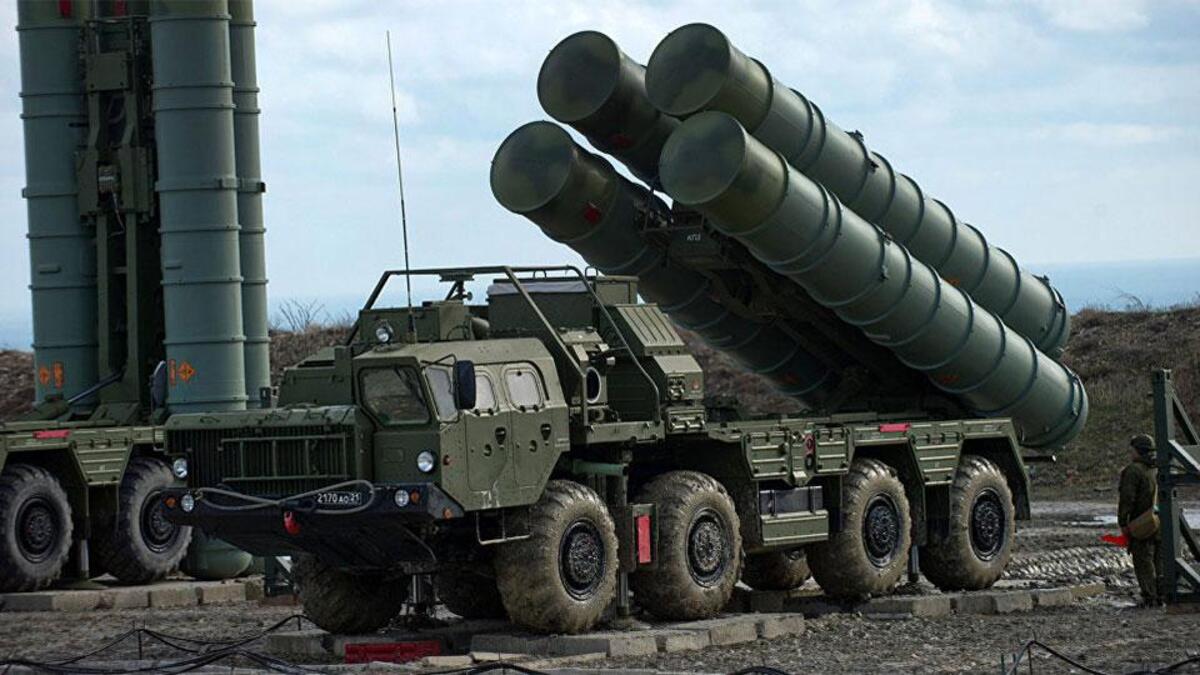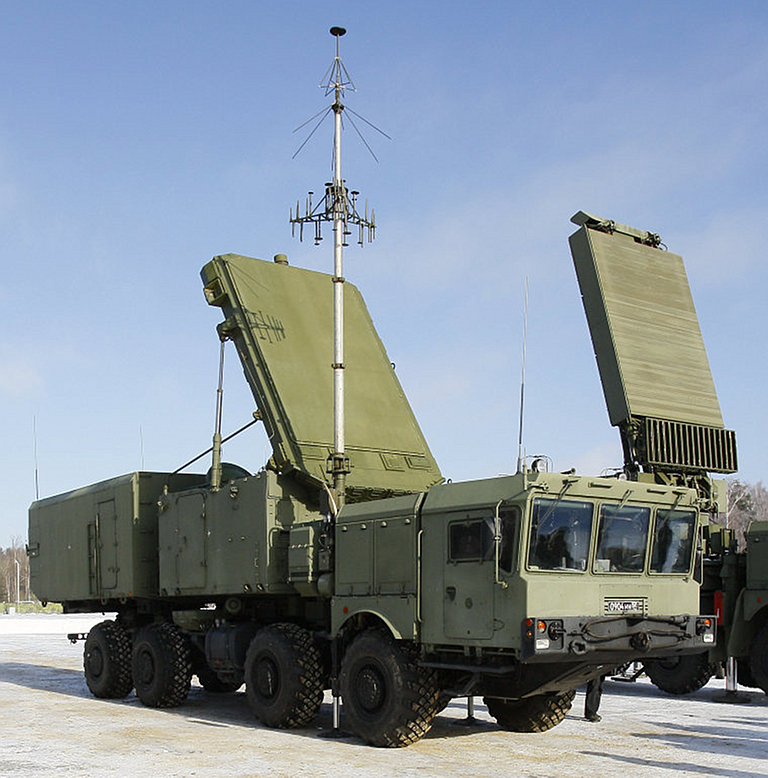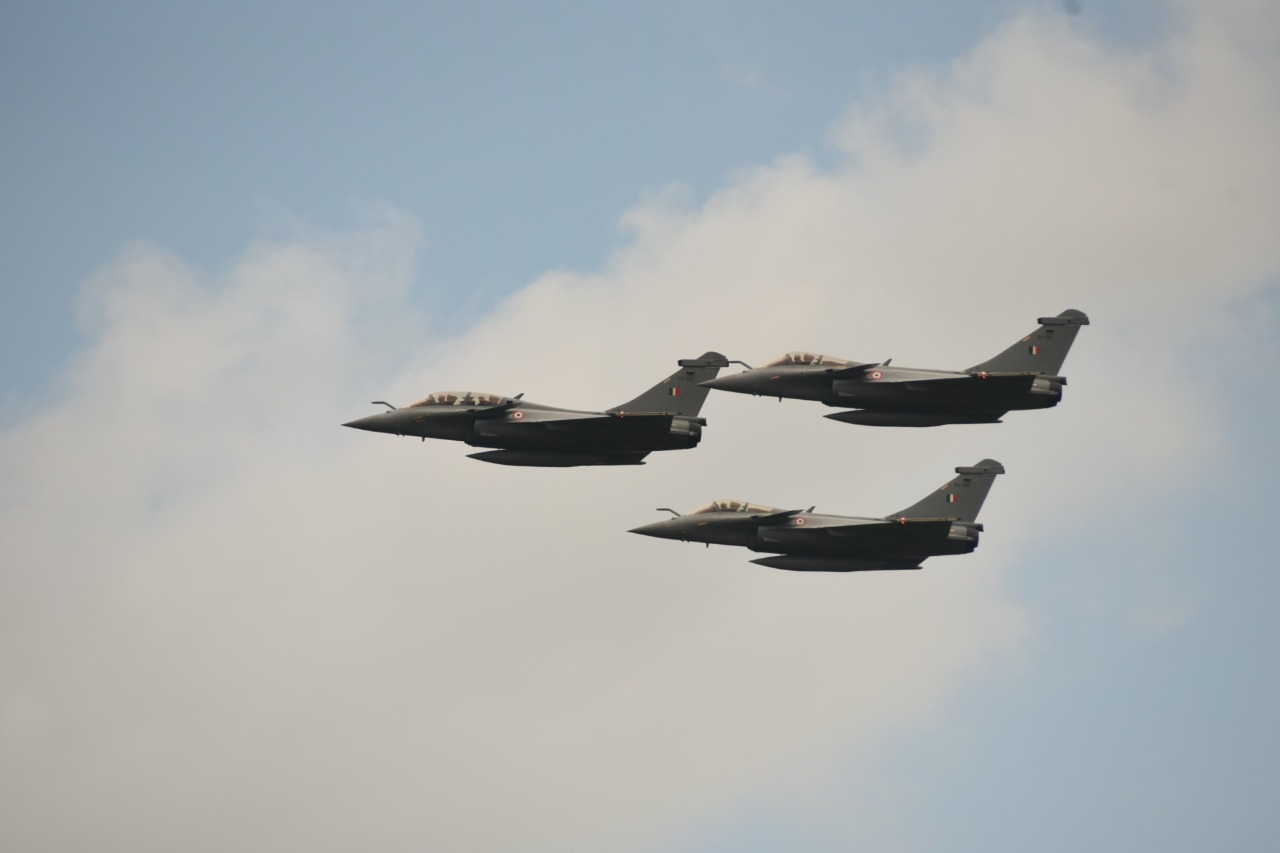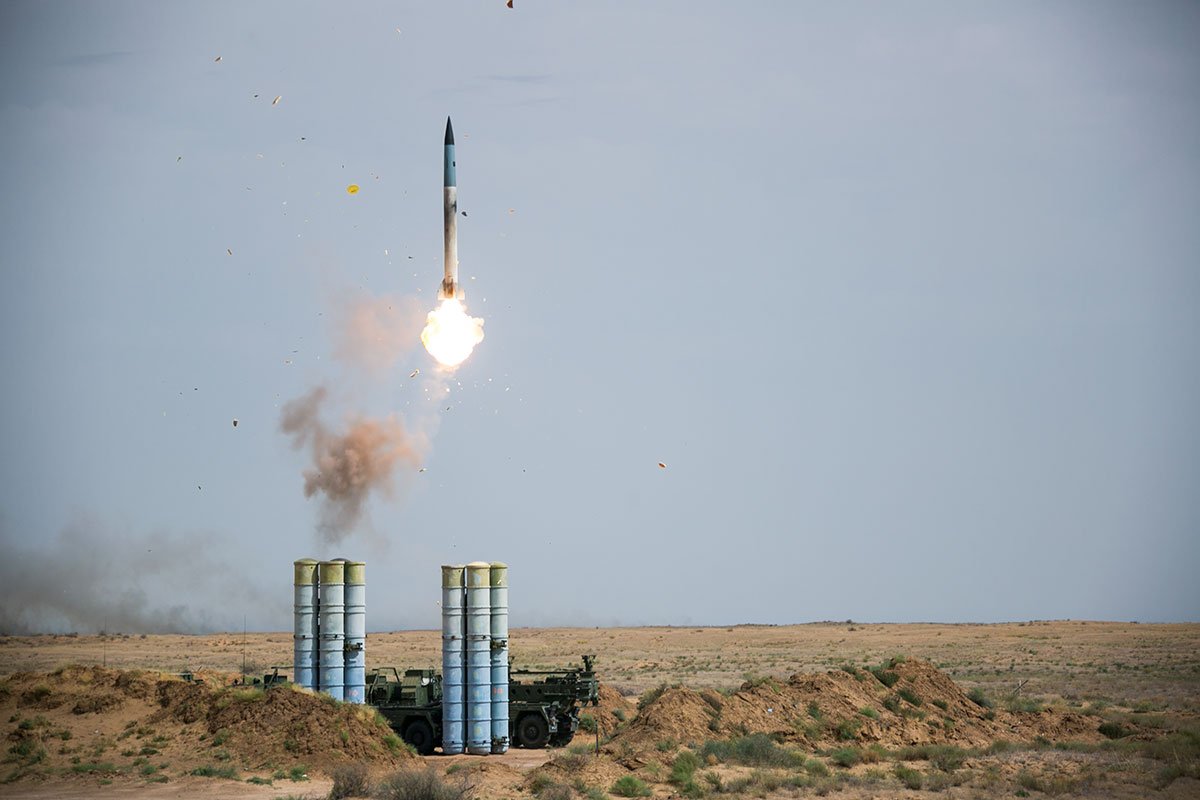India will very soon have a deadly combination of “omni-role” Rafale fighter jets and S-400 air defense systems to guard its border with China — from Arunachal Pradesh to Ladakh, according to defense analysts.
The two nuclear-armed neighbors have been locked in a border standoff in Ladakh for more than a year now. Almaz Antey Corporation, the manufacturer of S-400 Triumf, had earlier confirmed that delivery of the system would begin in December irrespective of the pandemic.
Russia recently also tested the upgraded S-500 system, firing at a high-speed ballistic target at a training ground in the Astrakhan Region.

The EurAsian Times earlier reported that the Chinese PLA has set up two squadrons of S-400 anti-aircraft missile systems at the Hotan airbase in Xinjiang and Nyingchi airbase in Tibet, close to the Line of Actual Control, the de facto India-China border.
Will This Invite US Sanctions?
The Russian S-400 Triumf (NATO name SA-21 Growler) is one of the most advanced missile defense systems in the world.
Younis Dar, a defense correspondent with EurAsian Times, had outlined the superior features of the defense system which could be a “game-changer” for the Indian military.
With a range of detection that extends to as far as 600 km, the S-400 is a winning bet at the western front as the moment an aircraft or a missile gets airborne in Pakistan, the system will warn India. It is highly mobile and can be readied in a matter of minutes to execute a strike.
All the radars, missiles, and launchers of the S-400 are mounted on 8×8 cross-country trucks, making them difficult to be tracked and destroyed.
It is equipped with a 92N6E electronically-steered phased array radar, also called the “Grave Stone”, which can detect 300 targets simultaneously and fire four different missile types at them based on the threat and range.
The defense system was seen in action in Syria when the Russian government deployed it in response to the downing of its Su-24M jet by Turkey. In 2015, the first S-400 unit was activated at the Khmeimim Air Base in Latakia city while in 2017; a second S-400 unit was activated 13 km from the city of Masyaf in northwestern Syria.
The S-400 remains a major irritant in US-Turkey relations as the former refused to sell its fifth-generation F-35 fighter jets to Ankara, a NATO ally, in response to their acquisition of the Russian S-400 missiles.
The S-400 system was also ordered by India in a $5.43-billion deal with Russia during the 19th India-Russia Annual Bilateral Summit in 2018 at New Delhi, to ensure the long-term security needs of the country.
The US was visibly irked when India had decided to carry forward with its purchase of Russian weaponry. There were media reports highlighting the possibility of applying Countering America’s Adversaries Through Sanctions Act (CAATSA) on India, under which Turkey was sanctioned.

However, three factors seem to work in favor of India. One, the country is not a NATO ally, thus is not bound by military obligations. India has always followed an independent military and foreign policy and to date maintains “strategic autonomy”.
Two, a major part of the US concerns stem from Russia acquiring the intelligence of the F-35 fighter jet, giving the latter a combat edge over the US. But since India was never offered the F-35 and does not plan to purchase them in near future, such a fear is completely baseless.
For CAATSA watchers on India, a very interesting answer from Secretary Blinken on India’s impending delivery of S-400 batteries from Russia: “We have our laws. We’ll apply our laws.” It does not appear that a sanctions waiver is a foregone conclusion. pic.twitter.com/1lShmk2OM3
— Vipin Narang (@NarangVipin) July 29, 2021
Three, India forms an integral pillar of QUAD, a four-member security alliance of the US, India, Japan, and Australia. Amid a rising China, the US has found a “natural ally” in India which is the only country in the Indo-Pacific region to share a territorial boundary with China.
Deploying S-400 Against China
Speaking to EurAsian Times, Abhijit Iyer-Mitra, a senior fellow at the New Delhi-based Institute of Peace and Conflict Studies says there is a high possibility of India deploying the latest S-400 defense system against the Chinese.
“It’s a very high likelihood given how Rafale jets have also been deployed against China rather than Pakistan,” he said.

“The S-400 is an extremely dangerous system and in practice creates a defensive shield against the Chinese aircraft, giving enough freedom and space to the Indian Rafale jets to deal with Chinese jets,” he added.
Explaining how Russia has such a policy between India and China where they sell better equipment to Indians than the Chinese, Iyer-Mitra noted that it mirrors how the US juggles between Israel and Saudi Arabia.
US’ Most Spectacular F-35B Jets That Can Land & Take-Off Vertically Finally Gets A New Challenger
“They (the US) used to sell F-16s to both countries but the Israeli ones were superior so they would guarantee to shoot down the Saudi ones,” he said.
Explaining the logic of deploying S-400 closer to the China border, he said, “A general gauge of the seriousness of the matter can be taken from where a country is deploying its frontline aircraft. So if India’s newest aircraft (Rafale) is being deployed against China, the newest military equipment (S-400) will also be deployed against China.”
In terms of S-400 versus the Chinese fighters like the J-20, the S-400 has an advantage, he says.

“But NATO has quite a bit of experience against the S-400, especially in Syria, where Russia had deployed the S-400 to protect its military posts,” he said.
French already have a lot of electronic intelligence on the Russian system which has been fed into the Rafale jets. “Rafale(Indian) against the S-400 (Chinese) is a much better bet than the Russian defense system against the Chinese J-20 and other fighters,” he noted.
Dar, when reviewing Indian Rafales against China’s J-20 jets and S-400 missiles, noted that Rafale jets have operated against the S-400s and know the systems quite well.
China, on the other hand, has been operating the S-400 for quite some time, but they have no experience of using them against French-origin jets in comparison to Su-30 and other Russian-origin jets.
This gives India a big advantage as Rafale under the defense umbrella of S-400 missiles would know very well how to dodge the Chinese S-400s and outflank their latest aircraft including the untested J-20s.




